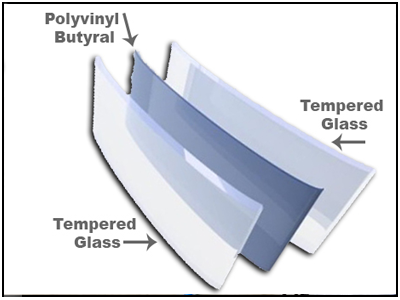Over the years, we have seen many innovations in the car industry. Some of them include a user-friendly infotainment system and increased safety features like airbags. However, one thing that has not changed much is the types of glass used for your car windows.
Glass is one of the most important parts of any vehicle, as it is essentially what separates you from the outside world. It also provides great protection for passengers inside the car. While glass may seem like a simple part, there are several different types that can be used in automobiles.
You may have noticed the trend of car manufacturers using different types of glass for their vehicle windows. The type of glass used in your car’s windows can affect how easily it breaks, how much heat gets into the cabin, and even the amount of glare that hits you while driving. Manufacturers are constantly changing up what they use in their cars, so let’s take a look at some common types that you might see on your next trip to the dealership.

Types Of Glass Used In Cars
- Laminated Glass
- Tempered Glass
Laminated Glass
A laminated windshield is the most critical part of a car. In recent years, laminated glass has been added to cars as a standard safety precaution to avoid accidents. The use of laminated glass for vehicle windows has been increasing due to its increased strength and resistance to breakage, combined with its ability to remain clear, even after breaking.
Laminated glass is used in vehicles for the purpose of safety. Laminated glass holds two pieces of glass together, with a thin layer of plastic between them. When laminated glass breaks, the main piece remains intact and the broken piece falls out. This prevents injuries to those inside or outside the vehicle from flying shards of glass.
Composition Of A Laminated Car Glass
Laminated windshields are used in vehicles and other products that require a windshield. The windshield is made up of multiple layers, which include a polycarbonate glass layer and a laminate layer.
The polycarbonate glass layer has multiple functions. It protects the vehicle’s interior from rain, wind, and snow. It also protects the passengers from UV radiation and reduces airborne noise.

The laminate layer serves as an additional protective barrier for the vehicle occupants. It helps to reduce the likelihood of glass breakage and injury to passengers in the event of an accident. The PVB layer in between the two sheets is what makes the windshield strong and durable.
All three layers are bonded together using an autoclave. An autoclave is a pressurized oven, which uses high temperatures and high pressure to bond the glass layers.
Application Of Laminated Glass In Automobiles
Apart from front car glass or windscreen, laminated glass is widely used in car sunroofs. A laminated sunroof offers more safety, clarity, and options to add tint options to your car. Some premium cars like the Mercedes Benz S350 use all laminated glass including door glass and rear windscreen.
Advantage Of Laminated Glass Over Tempered Glass
The key advantage of laminated glass in cars is that it can withstand serious accidents. It can be used for both front and back windows, offering superior protection to drivers and passengers. Laminated glass can also be fitted into side door windows for added security.
The main purpose of glass is to provide privacy and protection from weather conditions. This means that it should be able to prevent any kind of break-in and resist harsh temperature changes. Laminated auto glass is a high-tech product that can do all this and much more.
For small cracks in the laminated glass, there is an option for repair, which is not the case for tempered glass. A specialized resin is used to fill the crack, which restores glass strength and visual properties.
The Disadvantage Of Laminated Glass In A Car
The most common disadvantage of laminated glass is that it is prone to breakage over impact even with low force and hence, the cost of replacing a new windshield is very high in car maintenance.
Tempered Glass
Tempered glass is a type of safety glass that is produced by heating ordinary glass to a temperature at which it softens and then rapidly cools. This tempering process induces compressive strain on the surface of the glass and gives it strength and durability far beyond the normal glass.
Automobile tempered window panes are designed to break into small pieces in an impact, rather than shatter into deadly shards. Automobiles have been using tempered glass since the early 1960s
Application Of Tempered Glass In The Automobile
Tempered glass is widely used in car doors or windows. Another area where tempered glass is preferred is a rear windscreen, it decreases the cost as compared to the laminated rear windshield.
Advantage Of Using Tempered Glass
The main advantage of tempered glass is its cost-effectiveness. Compared to laminate glass tempered glasses are cheaper and easy to maintain. Low cost is the reason why many commercial operators still use tempered glass windshields in their buses, trucks, and canters. Also, tempered glass has more strength than laminated glass and is hence is less susceptible to break by stone or debris.
The Disadvantage Of Using Tempered Glass
The main drawback is the absence of PVB layer, which can stop a harmful item from entering the car chamber. Unlike laminated glass, tempered glass shatters on impact and hence can’t protect the occupants.
Also, as tempered glass shatters completely on impact, there is no chance to repair it as in the case of a laminated windshield.
Conclusion: You can call us at Windshield Store to learn more about the various types of automobile glass, including laminated and tempered glass. We are one of the most reputable automotive glass companies in your area, so if you have any questions or would like to schedule an appointment, give us a call today at +919278783578!
